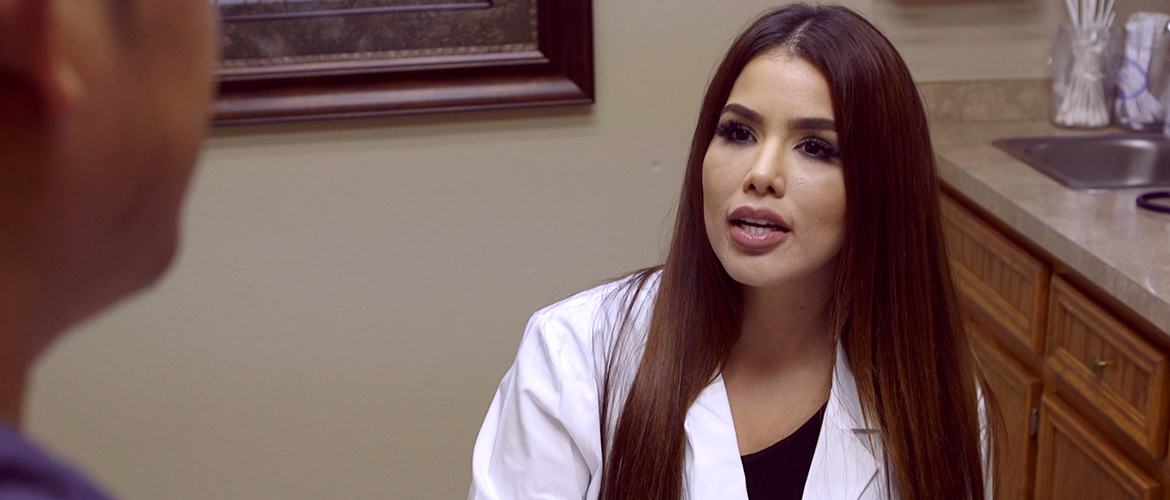The United States may lead the world in medical innovation, but the country still struggles to deliver care to everyone who needs it. This is particularly true in rural America.
Limited access to care contributes to worse health outcomes for people who live in rural communities. They are more likely to die from heart disease, stroke, cancer and chronic lower respiratory disease.
Rural communities average just 13 doctors for every 10,000 people, according to the National Rural Health Association. The number is closer to 32 in urban areas.
This is in part because it’s difficult to persuade doctors to practice in remote and economically challenged areas. One response to this recruitment challenge is repaying medical school loans.
For example, Blue Cross and Blue Shield of Oklahoma (BCBSOK) is helping bring a new primary care doctor to Texas County in the state’s panhandle. The insurer joined the county and the state medical association to fund a $160,000 grant over four years to help repay the doctor’s loans.
Nearly every county in Oklahoma has a shortage of primary care doctors, according to the federal government. Texas County has just eight doctors for every 10,000 residents.
“It’s going to take all hands on deck to provide rural areas with the care they need.”
These shortage areas are eligible for federal and state funding to help them recruit health professionals and fill gaps in care.
Texas County recruited Dr. Ivette Cuadrado, a recent medical school graduate from Puerto Rico. She will begin practicing at Memorial Hospital of Texas County in the city of Guymon, starting Jan. 1, 2019. Cuadrado’s Spanish-language fluency will help serve the community’s fast-growing Latino population.
“This public-private partnership is something we’ve been looking at for some time,” says Wes Glinsmann, executive director of the Oklahoma State Medical Association. “Bringing doctors to underserved areas is not something any one entity can do by itself. It’s going to take all hands on deck to provide rural areas with the care they need.”
Finding alternative sources of funding
Cuadrado’s hiring didn’t follow the typical script. Normally, the state’s Physician Manpower Training Commission attracts doctors for underserved areas with funds from the Tobacco Settlement Endowment Trust Fund. In this case, the commission sought community support because the budget for the fiscal year was already used.
BCBSOK, which insures 800,000 people statewide and nearly 8,000 in the panhandle alone, saw an opportunity to help its members gain better access to care.
“Our goal is to improve the health of all Oklahomans,” says Ted Haynes, an executive adviser and former president of BCBSOK. “Helping to place badly needed physicians in severely underserved areas of the state goes to the heart of our mission to bring access to affordable health care.”
Creative solutions to a national problem
Oklahoma is not alone. About 76 million people in the U.S. live in areas with physician shortages. It would take more than 14,000 more primary care doctors to fill these gaps in care, according to the Health Resources and Services Administration.
A constant drip of rural hospital closures adds to the challenge, according to the National Rural Health Association. The group has tallied 89 rural hospital closures since 2015 — including four in Oklahoma. As hospitals close, the health professionals who worked at the facilities often leave for larger cities, the association says.
Adding one primary care physician can have a big impact on a community. A single Oklahoma doctor supports an average of 12 jobs and contributes nearly $900,000 to wages and benefits, according to a recent That economic benefit ripples to other local businesses.
Some medical schools offer tuition repayment and other incentives to students who pledge to work in rural locations. This fall, Oklahoma State University and the Cherokee Nation announced a partnership to build a new medical school for tribal members. The effort comes on the heels of reports that Stilwell, in the heart of the Cherokee Nation, has the lowest life expectancy in the U.S.
“The primary care shortage in underserved areas of Oklahoma is estimated to more than double by the year 2030,” says Richard Evans, executive director of the Physician Manpower Training Commission. “If other Oklahoma businesses participate in such unique public-private partnerships, we could really turn a corner on access to care in rural Oklahoma.

